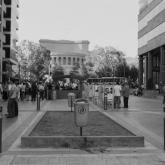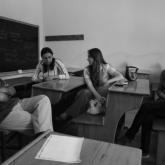Week 46: Ontological Walkscapes
Hi Everyone,
This Tuesday is another event in a year-long series of weekly conversations and exhibits in 2010 shedding light on examples of Plausible Artworlds.
This week, with any luck, we’ll be talking with Karen Andreassian, an ambulant artist based in Yerevan, Armenia, and initiator of a number of collective undertakings in and about the post-Soviet landscape, including Voghchaberd and Ontological Walkscapes, which will be included in the “Blind Dates Project”, opening later this week in New York City.
http://voghchaberd.am/
http://www.ontologicalwalkscapes.format.am
As its name suggests, “Blind Dates” is more or a matchmaking than curated project, pairing up artists and non-artists from “what remains” of the peoples, places and cultures that once constituted the diverse geography of the Ottoman Empire (1299-1922). Andreassian’s own contribution is a fragment of his ongoing Ontological Walkscapes project — an invisible but undeniable form of dissent-by-walking against the current regime and its oligarchs.
Inspired by the “factography” practices of the Russian avant-garde (LEF 1923) Andreassian examines two apparently unrelated phenomena in contemporary Armenia: the slow disappearance of 1970s Soviet-Armenian architecture and the shrinkage of public spaces due to the construction boom during the last decade; and the peaceful protests which led to the forceful dispersion of the demonstrators during the last post-presidential election at Azatutyoun [Freedom] Square. With both, the artist takes on the role of a “walker” through whom personal stories of ordinary citizens create a map of places (social space) that are neglected, forgotten, or have disappeared.
Ontological Walkscapes is itself an extension of Andreassian’s also ongoing Voghchaberd project, in which he does literally nothing but accompany a small village near Yerevan as its inhabitants — historically escapees of the 1916 Genocide — cope with the slow but irrevocable collapse of their geological landscape, following an earthquake in 1995, which mirrors the parallel collapse of their geopolitical landscape with the demise of the Soviet Union. Andreassian is the focusing device for a project of which the village inhabitants are the self-organized coauthors.


